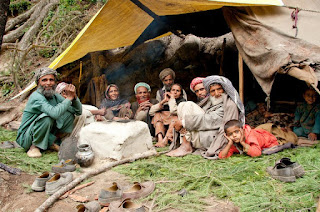 |
| New York Times' Image of the Gujjar people, one of the caste population in India. |
The creation of strict caste systems in South Asia centuries ago has created an interesting, yet
horrible, opportunity for researchers to study how genes change “naturally” in humans.
horrible, opportunity for researchers to study how genes change “naturally” in humans.
A paper published in Nature Genetics by Nakatsuka and colleagues found particular Indian
populations had higher rates of recessive diseases then Ashkenazi Jews and Finns
populations that have also been impacted by centuries of limited gene flow.
populations had higher rates of recessive diseases then Ashkenazi Jews and Finns
populations that have also been impacted by centuries of limited gene flow.
Because of the centuries old caste system in South Asia, particularly in India, limited/prevented
intermarriage, and by proxy interbreeding, between individuals within different castes has caused
these different caste populations to a higher rates of recessive disease associated genes.
intermarriage, and by proxy interbreeding, between individuals within different castes has caused
these different caste populations to a higher rates of recessive disease associated genes.
One of the authors on this paper, Dr. Reich, said to the New York Times that the different caste
populations in India probably has a version of the human genome with a knockout of every single
gene which makes these populations interesting to study.
populations in India probably has a version of the human genome with a knockout of every single
gene which makes these populations interesting to study.
-Kristen Tuosto

No comments:
Post a Comment